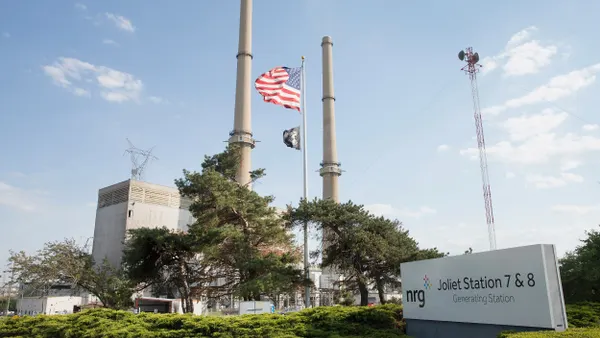Dive Brief:
-
The Environmental Protection Agency (EPA) late Friday denied petitions from Delaware and Maryland asking it to address coal plant pollution from neighboring states that they said impedes their ability to meet clean air regulations.
-
EPA said the two states did not prove that out-of-state coal plants will emit pollutants at a level that violates the "good neighbor" policy of the Clean Air Act (CAA). In 2016, Delaware submitted four petitions charging that plants in Pennsylvania and West Virginia violated the policy, while Maryland's petition named 36 electric generating units (EGUs) in five states that it believed were in violation.
-
EPA in late May proposed to deny the petition because it said the two states had not proved that cross-state pollution would cause them to violate federal air standards. Maryland's Attorney General said he would appeal the decision in court.
Dive Insight:
EPA's decision to deny the cross-state pollution petitions from Delaware and Maryland is another reminder of the more lenient approach to air regulation taken by Administrator Andrew Wheeler and his predecessor, Scott Pruitt.
In their petitions, the two states said smog-causing emissions from coal plants in the Midwest are blowing across state lines and making it difficult for them to meet the NAAQS standards for ozone.
EPA, they said, should institute "federally enforceable short-term, ratebased emissions limits" on nitrogen oxide (NOX) emissions, which cause ground-level ozone, commonly known as smog. Many of the plants, the states pointed out, already had pollution control technology installed, but were not fully utilizing it to reduce emissions.
The EPA, however, said that recent updates to the NAAQS standards for cross-state ozone mean that the plants are already reducing their emissions as much as is cost effective. In 2016, the agency finalized Cross-State Air Pollution Rules (CSAPR) that limit ground-level ozone to 75 parts per billion, less stringent than the 70 ppb standard for in-state ozone.
"[T]he CSAPR Update appropriately quantified the cost effective NOX reduction potential from the EGUs named in the [Maryland and Delaware] petitions," the agency wrote, "and the EPA does not find any further NOX reductions that may be available from these EGUs at more stringent levels of NOX control to be cost effective considering additional relevant factors such as NOX reduction potential and air quality impacts."
Emissions trading under the updated CSAPR regulation is already reducing emissions to the levels that Maryland and Delaware want, EPA argued.
"[T]he best data that the agency has available at this time … indicate the CSAPR Update ozone season allowance trading program is reducing summer-time NOX emissions," EPA wrote, "and these data suggest that the units named in the [Maryland and Delaware] petitions are collectively controlling their NOX emissions consistent with the NOX control strategies identified in the petitions."
Leaders in the eastern seaboard states criticised the EPA's determination, with Maryland Attorney General Brian Frosh, D, pledging a court challenge.
"Maryland strictly controls NOX emissions within its own boundaries," Frosh said in a Monday statement. "We intend to appeal EPA's decision to the U.S. Court of Appeals for the D.C. Circuit, so that Marylanders do not have to continue suffering the consequences of other states' pollution."











